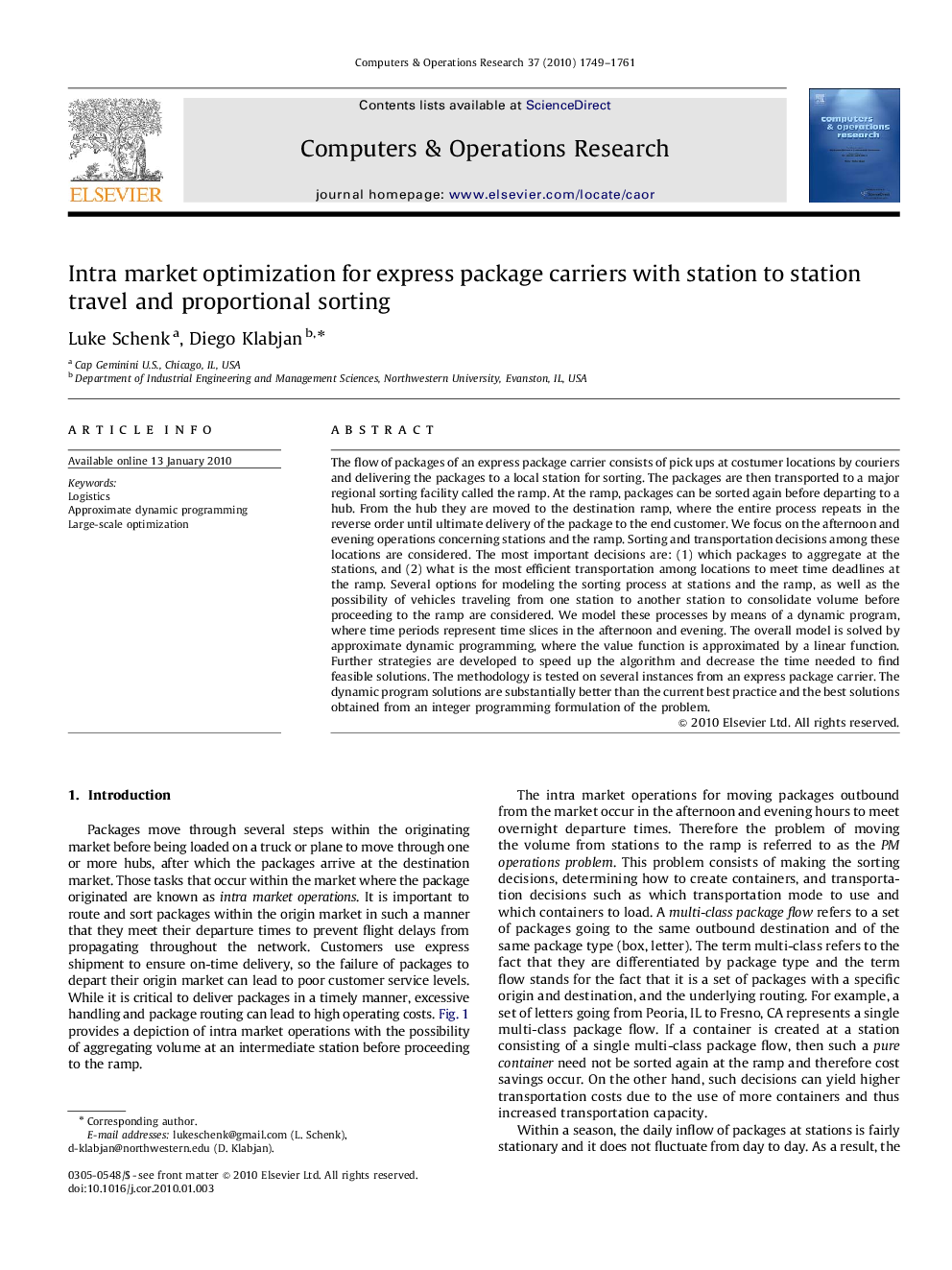| Article ID | Journal | Published Year | Pages | File Type |
|---|---|---|---|---|
| 474751 | Computers & Operations Research | 2010 | 13 Pages |
The flow of packages of an express package carrier consists of pick ups at costumer locations by couriers and delivering the packages to a local station for sorting. The packages are then transported to a major regional sorting facility called the ramp. At the ramp, packages can be sorted again before departing to a hub. From the hub they are moved to the destination ramp, where the entire process repeats in the reverse order until ultimate delivery of the package to the end customer. We focus on the afternoon and evening operations concerning stations and the ramp. Sorting and transportation decisions among these locations are considered. The most important decisions are: (1) which packages to aggregate at the stations, and (2) what is the most efficient transportation among locations to meet time deadlines at the ramp. Several options for modeling the sorting process at stations and the ramp, as well as the possibility of vehicles traveling from one station to another station to consolidate volume before proceeding to the ramp are considered. We model these processes by means of a dynamic program, where time periods represent time slices in the afternoon and evening. The overall model is solved by approximate dynamic programming, where the value function is approximated by a linear function. Further strategies are developed to speed up the algorithm and decrease the time needed to find feasible solutions. The methodology is tested on several instances from an express package carrier. The dynamic program solutions are substantially better than the current best practice and the best solutions obtained from an integer programming formulation of the problem.
